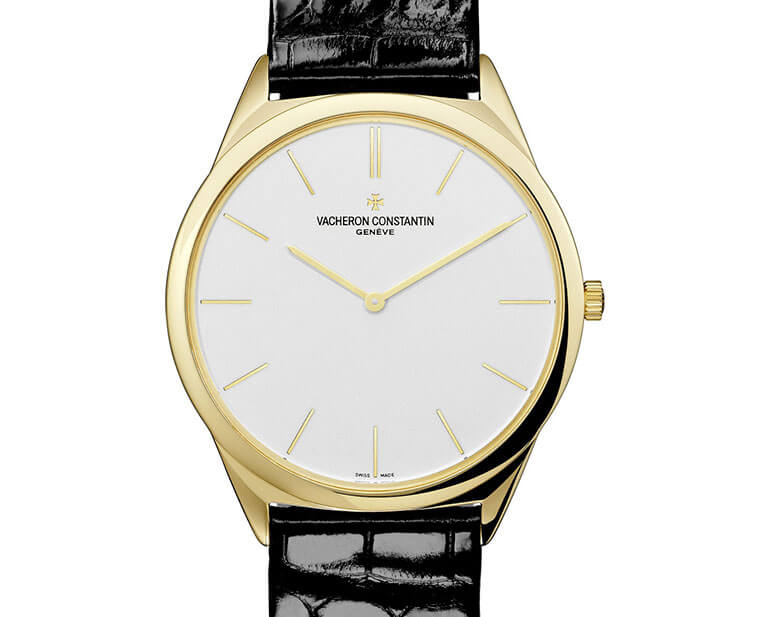At the Salon International de la Haute Horlogerie (SIHH) in January, Jaeger-LeCoultre unveiled its Master Ultra Thin Jubilee in honour of the Manufacture’s 180th anniversary. With its Calibre 849 (1.85mm) slipped inside a “knife-shaped” case measuring 4.05mm high, this timepiece took the honours for its category, beating by a whisker Vacheron Constantin whose Historique Ultra-Fine 1955 comes under the bar at 4.13mm. The Grande Maison is a past master in this domain after all. Already in 1907 it launched the thinnest-ever pocket watch (Calibre 145, 1.38mm), returning in 1953 with the Calibre 803, a mere 1.64mm high and which “heralded the era of ultra-thin wristwatches.” This era continued in 1965 when Jaeger-LeCoultre introduced a manual-winding version of the same calibre, made slightly thicker (1.85mm) by the addition of an anti-shock system but ditching the barrel bridge. Renamed Calibre 849, it is this movement that drives the Master Ultra Thin Jubilee. Nor has Jaeger-LeCoultre neglected the challenge of thinness in the self-winding arena, having developed Calibre 920 (2.45mm) for Audemars Piguet, Patek Philippe and Vacheron Constantin, released in 1967. First in a line of contemporary ultra-thin movements, its sibling, Calibre 900, adds a date function and barely a millimetre (3.25mm). One after the other, Jaeger-LeCoultre has brought its expertise to bear on calibres of exceptional thinness, additional complications included.

Tribute to Jean Lassale
Mission accomplished. Until, that is, Piaget came along with its Altiplano 38mm 900P, recently unveiled prior to the SIHH in 2014. Since the late 1950s and early 1960s, Piaget has been a frontrunner in the race for thin, beginning with its famous manual-wind Calibre 9P (2.00mm) and automatic Calibre 12P (2.30mm). Indeed, of its 35 Manufacture movements, 23 are ultra-thin calibres and 12 of these are record-holders in their category. The company had already claimed gold in the automatic segment with the unveiling, in 2010, of its Altiplano 43mm 1208P hours, minutes and small seconds, which combines a 2.35mm movement with a 5.25mm case. How could it refuse to take up the challenge thrown down by Jaeger-LeCoultre? The result is a new Altiplano standing 3.65mm high. The back of the case doubles as the baseplate while the bridges are mounted on the dial side, where the mechanical parts are also visible. Has Jaeger-LeCoultre said its last word? Answer at the 2014 SIHH where the two brands, both from the Richemont stable, could well go head-to-head!
Jean Lassale, a now defunct brand that belonged briefly to Seiko, was also a serious contender in the race to be thinnest, with its manual-wind Calibre 1200. Produced between 1976 and 1979, its height of 1.2mm is a feat which has yet to be equalled. To achieve this exploit, “each wheel of the movement is fixed to an axle driven in a micro ball bearing itself fitted to the plate.” By means of comparison, a Swiss 20 centime coin is larger in diameter by 0.6mm and thicker by 0.4mm than this Calibre 1200. Fortunes change, and Nouvelle Lemania was able to recover the rights and patents for this movement. As of 1982, this subsidiary of Swatch Group produced the successors to the 1200 and the 2000, its automatic counterpart. Initially, they were supplied exclusively to… Piaget, and later… Vacheron Constantin. But that’s another story… of watchmaking’s history and of movements pushed to the limits of reliability.














